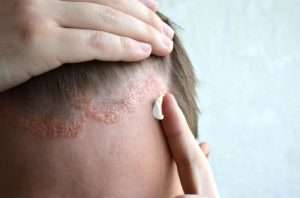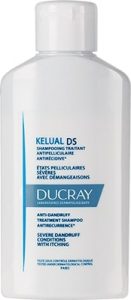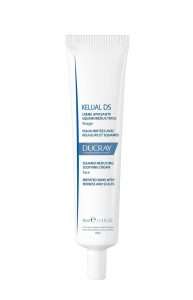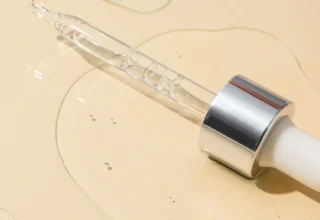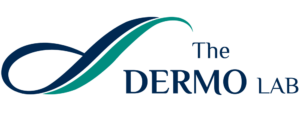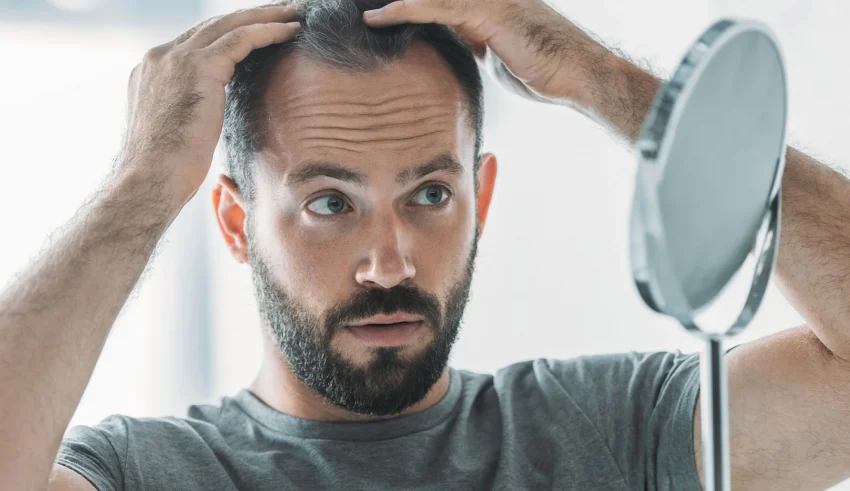
Seborrheic dermatitis is a common, non-contagious condition of the skin areas rich in sebaceous glands. It is characterized by scaling (overproduction and shedding of skin cells) and sometimes redness and itching of the skin. Its severity can vary from mild dandruff on the scalp to red, scaly patches on the skin. Can seborrheic dermatitis be cured? Seborrheic dermatitis treatment can be a hassle for most people. But don’t worry, in this article from The Dermo Lab and in collaboration with the dermatologist Dr Shaimaa Naseeb Abd Al Moez, we’re going to discuss ways to help you control this condition.
Who gets seborrheic dermatitis and why?
Seborrheic dermatitis can affect people of all ages, but it is most common in infants and adults between the age of 30 and 60. In adults and adolescents, the condition is more common in males.
In infants, the condition usually clears on its own and does not recur. In adults, on the other hand, seborrheic dermatitis usually follows a pattern of flare-ups and recoveries that can last for years.
An inflammatory reaction to an excess of Malassezia yeast, an organism that normally lives on the surface of the skin, is the likely cause of seborrheic dermatitis. Malassezia overgrows and the immune system overreacts to it, leading to an inflammatory reaction that results in skin changes.
Certain medical conditions can increase the risk of developing seborrheic dermatitis, including psoriasis, HIV, acne, rosacea, Parkinson’s disease, epilepsy, alcoholism, depression, and eating disorders.
Common triggers for seborrheic dermatitis may include the following:
- Stress
- Hormonal changes or some illnesses
- Harsh detergents, solvents, chemicals, and soaps
- Cold, dry weather
- Certain medications
Read on to learn more about seborrheic dermatitis treatment and the link between seborrheic dermatitis and hair loss.
Can seborrheic dermatitis cause hair loss?
Dr. Shaimaa Naseeb Abd Al Moez indicates that seborrheic dermatitis can cause hair loss in rare cases.
Excessive scratching can injure the hair follicles, resulting in some hair loss. In addition, the excess sebum associated with seborrheic dermatitis can trigger a Malassezia overgrowth. When this yeast grows out of control, it can cause inflammation that makes it more difficult for nearby hair to grow.
Hair loss due to seborrheic dermatitis, whether from excessive scratching or fungal growth, is only temporary. Dr. Shaimaa Naseeb Abd Al Moez affirms that your hair will grow back once you recover from seborrheic dermatitis.
If you have seborrheic dermatitis and are losing your hair, make an appointment with your doctor. He or she can help you develop a treatment plan and rule out other potential causes of your hair loss.
What is the best treatment for seborrheic dermatitis?
At present, no treatment can permanently cure seborrheic dermatitis. However, it is possible to act effectively on the symptoms and reduce the frequency of recurrence as much as possible.
The treatment is effective but only acts on the symptoms. Symptoms can therefore reappear during a new outbreak or when treatment is stopped prematurely. The treatment consists of reducing seborrhea and Malassezia yeast colonization, and therefore inflammation, at the earliest signs.
According to Dr. Shaimaa Naseeb Abd Al Moez, treatment includes over-the-counter shampoos, topical antifungals, emollients, and systemic treatment in some cases.
1- Shampoos
Many cases of seborrheic dermatitis are effectively treated by shampooing 2 to 3 times a week with anti-dandruff shampoos containing selenium sulfide or zinc pyrithione. You can also use a shampoo with ketoconazole or ciclopiroxolamine.
Shampoos for this skin condition are specially formulated to fight severe dandruff. They purify the scalp, help eliminate persistent dandruff and prevent its recurrence. They can also reduce symptoms of discomfort such as itching and redness.
Ahead, a shampoo for seborrheic dermatitis with clinically-proven efficacy that will gently soothe your stressed scalp.
Kelual DS Anti-Dandruff Treatment Shampoo
2- Topical antifungals
Treatment also includes topical therapy with antifungals (ketoconazole, ciclopiroxolamine) and anti-inflammatory agents, and symptomatic relief of itching.
For irritated and flaky skin, it is recommended to use a cream that removes flakes and purifies the skin on areas particularly prone to irritation, such as the edge of the scalp, eyebrows, nose wings, and eyelids.
That’s why we recommend the following cream from Ducray:
Kelual DS Squamo-reducing Soothing Cream
3- Emollients
A moisturizer for seborrheic dermatitis in the form of creams or spray oils can be applied to the scalp by massaging it into the skin. Medical emollients in lotion, gel, and oil spray form may be suitable.
4- Systemic treatment
Very rarely, oral anti-yeast treatment may be necessary (e.g., Itraconazole or Fluconazole) if seborrheic dermatitis becomes severe or extensive.
The important message is that long-term treatment is needed to keep this condition at bay. If it reappears, it is not because treatment has failed, but because of the persistent nature of the condition. This is why continuous treatment with anti-yeast measures is vital.
What are the basic rules that can help in seborrheic dermatitis treatment?
A few basic rules can help fight seborrheic dermatitis and prevent or delay the onset of a new outbreak by reducing the factors that contribute to its appearance.
1- Know your triggers
Your flare-ups may be related to an allergic reaction, so try to document anything unusual or new in your environment when a flare-up occurs.
To avoid triggering a flare-up, avoid wearing wool hats and sweaters. Choose fabrics such as cotton and silk instead.
2- Self-care measures
The following steps can help:
- Avoid styling gels and hair sprays during an outbreak.
- Avoid alcohol-based products, as they can trigger a reaction.
- Cleanse your skin and scalp by using gentle dermo-cosmetic products suitable for skin prone to seborrheic dermatitis.
- Enjoy the sun while protecting yourself.
3- Support your immune system
A weakened immune system can also contribute to the severity of your symptoms. Take care of yourself and make sure your diet is rich in vitamins E, C, and K.
Living with Seborrheic Dermatitis
Seborrheic dermatitis is considered chronic. This means that it is a lifelong condition, however, it can be controlled with treatment. The negative effects of this condition are additional fungal infections and emotional distress. Most people who live with seborrheic dermatitis are self-conscious and have low self-esteem.
Treating the symptoms of seborrheic dermatitis is very important. In case of doubt or if you have difficulties in following your treatment, do not hesitate to consult your dermatologist to find adapted solutions with him.
